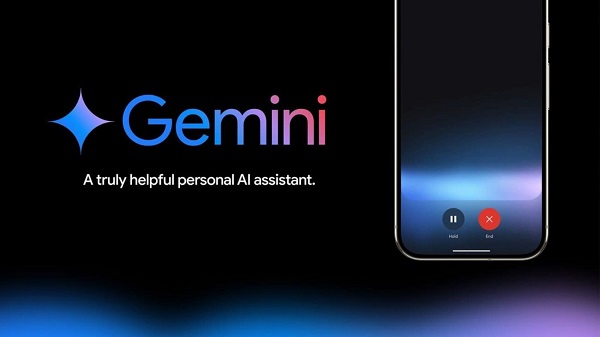Opinion
Climate Fears and Political Smoke Screens
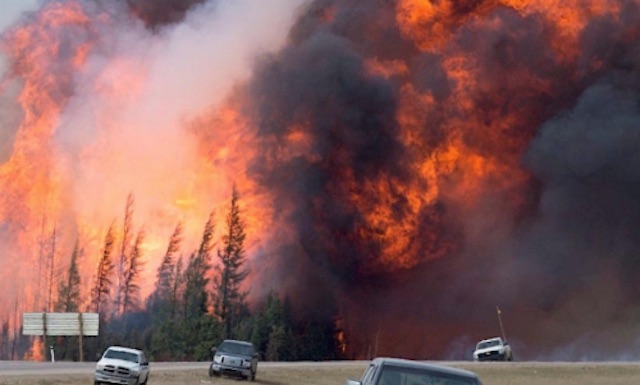
This article is from The Opposition With Dan Knight substack. |
|
Unmasking the Political Smoke and Mirrors Amidst Flames, Arson, and Fear
Good Morning my fellow Canadians! You know, the more things change, the more they stay the same, especially in our political landscape. Here we are, amid rising temperatures and heated debates, and as the wildfires burn brighter, so do the Twitter feuds among our politicians. Now, polls indicate that Pierre Poilievre’s Conservative Party is edging into majority territory, and well, that’s triggered a full-blown meltdown from the usual quarters.
First in line, Harjit Sajjan, Minister of Emergency Preparedness. He tweeted, ‘Canadians can’t afford leaders who refuse to believe climate change is real,’ citing our worst wildfire season on record. It’s a brilliant strategy, really; never waste a good crisis to get your point across. I mean, who cares about providing solutions when you can point fingers?
Jonathan Wilkinson, our valiant Minister of Energy and Natural Resources, criticizes the Conservative Party for not even trying to recognize that climate change is real. Jonathan, we’re still waiting for you to recognize that humans, actual Canadian citizens, are setting forests on fire deliberately. But sure, it’s all the Conservative Party’s fault. Hilarious!
And then the Liberal Party, oh, the Liberal Party, wagging its finger at all of us, saying, ‘Canadians want more climate action, not less.’ They say it like they’ve cracked the Da Vinci Code of Canadian public opinion. Really? Because last time I checked, polls are showing Canadians might want something a little different.
Let’s not forget the honorable Ryan Turnbull, a man who seems to believe that Pierre Poilievre is the harbinger of the apocalypse, promoting ‘ignorance, hate, division,’ and basically every bad thing you can think of. Clearly, Poilievre’s struck a nerve.
So why the desperation? Why the continuous fearmongering? Could it be because they’re afraid that Canadians are starting to see through the smoke—quite literally? Now, you and I both know that the Liberals would love nothing more than to make you believe that the world is on fire and it’s all because of climate change. The mantra: ‘The Earth is burning, so give us more of your hard-earned money to save it.’ But amid the hysteria, let’s focus. We’ve been through a rough wildfire season. Yes, we’ve all seen the headlines. Yet, here’s the twist. Smithsonian Magazine reveals that 84% of wildfires in our southern neighbor, the United States, are started by human activity. But hold on, in Canada, it’s just 55%. Why such a dramatic difference?
Are Americans simply more careless, or could it be that our authorities are quicker to dismiss human involvement for the more politically advantageous ‘climate change’? Isn’t it more convenient to blame the ambiguous, the uncontrollable, than to investigate potential criminal behavior, like arson, which could be preventable?
And it’s not just a rhetorical question. We have had multiple instances of arson across the country. In Mission, BC; in Mackenzie; in Vernon North Okanagan; in Castlegar; in Grand Forks; in Pictou County, Nova Scotia; in Yellowknife. Just recently, a man in Quebec was arrested for setting fires in forested areas. He’s facing charges. Yet, do you see the Liberal government or mainstream media making a big deal out of that? No, because it doesn’t fit the narrative.
In the flurry of headlines, accusations, and the general media hubbub about the wildfires in Quebec, we’re missing something truly elemental: the entire story.
Last month, CBC News blazed across our screens with a dire proclamation. Climate change made weather conditions that powered Quebec’s wildfires twice as likely. That was the conclusion from the World Weather Attribution initiative, a U.K.-based group. Their analysis came in the wake of the record-setting fires in Quebec, and its takeaway? Climate change is ramping up the heat, and in turn, igniting the forests.
Yan Boulanger, a scientist at Natural Resources Canada, even labeled these findings as ‘shocking.’ The province had seen an astonishing 5.2 million hectares burned. The entirety of Canada? A whopping 15.3 million hectares — shattering the previous record. As for this analysis, it’s yet to be peer-reviewed, but CBC was quick to point out the past track record of the research group.
And while those numbers are staggering and the climate concerns valid, there’s another piece of news that’s just as vital to digest.
Two days ago (almost a month later), Quebec provincial police arrested one Brian Paré in connection with — wait for it — numerous forest fires that ripped through the northern province. This isn’t about a stray campfire or a misplaced cigarette butt; this is deliberate, calculated arson. Paré faces charges for setting a fishing cabin ablaze and torching vast stretches of forest over a span of months. It took an army of behavior analysts, criminal profilers, and forensic psychologists to track this man down.
No mention of climate change in that courtroom, I assure you. Do you know what makes fires 100 times more likely? It’s not climate change; it’s ARSON!
Now, I can hear the chorus already, “Dan! Climate change sets the stage for these fires to be more devastating!” Sure, let’s talk about setting the stage. You see, while the liberal media and their academic buddies are blaming your SUV and your meat-eating habits for setting forests ablaze, they’re conveniently ignoring one glaring point: people—real, living human beings—are lighting these fires. Not the weather, not some cosmic karma for humanity’s supposed ‘sins’ against nature.
As for those numbers that supposedly show the weather conditions for these fires are twice as likely because of climate change? A not-yet-peer-reviewed study is your smoking gun? Come on.
And let’s not forget the broader context here. Remember British Columbia?Over 1.6 million hectares devoured by wildfires this year alone. Astonishing, until you dive into the numbers. This isn’t some climate-induced Armageddon; it’s a pattern, one that has a lot of variables—climate being just one small piece of it. Fires have raged for years, caused by everything from lightning to, yes, human negligence. Just ask the folks who remember the Chinchaga fire of 1950—the biggest one North America has ever seen.
Climate change is an easy boogeyman. You can blame it for everything and thus blame everybody, which leads to a broad call for action that usually translates to more control, more regulations, and more taxes. But what it does not lead to is a discussion on the complexities and nuances.
You see, Canada, that’s the sinister issue afoot here. It’s much easier to control a population that’s operating on fear, especially when you can stoke that fear with selective storytelling. As you mull over these points, ask yourself: are we being given the full story, or just the convenient parts that fit a certain agenda?
So you’ve got all these questions swirling in your head, right? Complexities, nuances, arson rates, and where is all that in the grand narrative? Nowhere. Because it doesn’t fit the script, the master plan of Trudeau and Guilbeault to keep you scared, to keep you submissive. They don’t want an informed public asking hard questions; they want a fearful public, willing to buy into whatever they’re selling.
And oh boy, are they selling. A carbon tax here, a trip to China there. It’s like they’re hawking fear from a roadside stand, only instead of selling you overpriced trinkets, they’re peddling overpriced delusions. It’s a yard sale of deception, folks, and the currency is hitting your wallet via taxes!
Alright, now that we’ve connected the dots, let’s dive back into the murky waters of Trudeau’s ‘progressive’ policies because it’s high time somebody said it. You’ve got Justin Trudeau and his trusty sidekick Steven Guilbeault treating the Canadian people like we’re all a bunch of morons. They want to talk about how ‘progressive’ their carbon tax is, and how it’s supposedly saving the planet. Let’s set the record straight: If their carbon tax were the life-saving vaccine for climate change they claim it to be, British Columbia should be a Garden of Eden right now. But guess what? It’s not.
Don’t you just love how they evade accountability? They’re like a couple of tap dancers sidestepping questions they don’t want to answer. Oh, they’ll tell you that it’s ‘complex,’ that you ‘wouldn’t understand.’ Really? You’re going to pull that card? How condescending can you be? This is the same Trudeau who wore blackface, remember? Now he’s judging your understanding of complex issues?
And let’s talk about Guilbeault’s trip to China. Oh yes, China—the world’s leading polluter. The irony is so rich, you could drizzle it on pancakes. What’s he doing there? Sharing tips on how to be environmentally unfriendly? It’s absurd! Yet, they continue to offshore Canadian manufacturing to China so that our country’s carbon footprint ‘looks’ smaller on paper. They’re just shifting the dirt under the rug! It’s all smoke and mirrors!
Now, I know what some of you are thinking, “But the Liberals are doing something about climate change!” Are they? Are they really? Because last time I checked, our forest management is underfunded, our firefighters are under-resourced, and people’s homes are going up in flames! All while Trudeau’s jet-setting around the world!
And let’s not even get started on their international dealings. They have the audacity to preach about ‘green energy’ while sending coal off to China. It’s like a doctor smoking a cigarette while advising you to live a healthy lifestyle. It’s absurd, laughable, and downright insulting to the intelligence of Canadians.
So, when Trudeau and Guilbeault start accusing the Conservatives of wanting to roll back their so-called ‘climate initiatives,’ you better believe the answer is YES! Because Canadians are fed up. They see through the lies, the sleight of hand, the empty gestures that are as hollow as a bamboo shoot!
People are no longer buying into their deceptive narrative. You’re tired of it. I’m tired of it. And you know what? The days of nodding along to sanctimonious drivel are over. Canadians want action, not platitudes. They want honesty, not deceit. And most importantly, they want competent leadership!
Canadians are not stupid. Far from it. We’re a nation of problem solvers, of innovators, of people who brave harsh winters and come out stronger for it. We deserve leadership that reflects that spirit, not one that seeks to divide us, to stoke fears and rely on alarmism to keep their grip on power. It’s high time our politicians understood that message. It’s high time they were held to account for treating Canadians like pawns in their ideological games
And come 2025, let’s make sure they get that message, loud and clear. Canadians are fed up. We’re through with the lies, the virtue signaling, and the blatant disregard for the people who make this country great. So let’s roll up our sleeves, Canada, and do what needs to be done. Let’s vote them out and reclaim the true north, strong and free!
Carbon Tax
Canadian energy policies undermine a century of North American integration
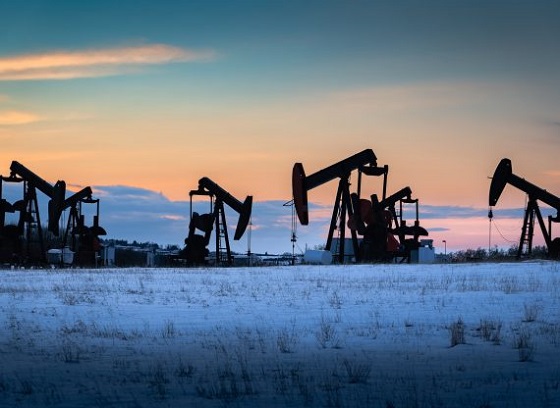
Energy trade with the U.S. alone is over C$80 billion more than all merchandise trade between Canada and China
Canada’s energy sector is a cornerstone of North American prosperity, but a number of federal policies have weakened its foundation over the past decade, observes a new MEI publication released this morning.
“For a century, this North American energy machine kept churning, irrespective of political winds and to the betterment of everyone on both sides of the 49th parallel,” says Taylor MacPherson, associate researcher at the MEI and author of the report. “But we can’t take it for granted; we must be steadfast in protecting this unique, mutually beneficial relationship.”
Canada is the world’s fourth-largest oil producer, fifth-largest natural gas producer, and third-largest hydroelectric generator.
Canadian exports of hydrocarbons—commodities such as crude oil, natural gas, natural gas liquids, and refined petroleum—to the United States alone totalled C$169.8 billion in 2024. This represents 22 per cent of all goods Canada exported that year.
Canada imported C$33.4 billion in U.S. hydrocarbons, representing 4 per cent of all goods imports.
“This partnership is a genuine two-way lifeline,” said Mr. MacPherson. “In the winter, U.S. gas backs up Ontario during the frigid months, while Canadian gas feeds Californian power plants in the summer, so neither country is exposed to excessive price shocks.”
The two nations have complementary market structures: for instance, Canada produces heavy crude ideal for America’s complex refineries. In the meantime, U.S. shale fields produce light oil that eastern Canadian refineries can use.
Two-way energy trade stands at over C$200 billion annually, equalling 13 per cent of all Canadian merchandise trade. This is larger than Canada’s entire two-way merchandise trade with China in 2024, which stood at C$118.7 billion.
The energy sector accounts for 10.3 per cent of Canada’s GDP in 2023 and 3.4 per cent of employment, totalling 697,000 jobs.
Employment in the sector is among the best paid in the country, with average annual compensation in oil and gas reaching roughly C$200,000, compared to just over C$75,000 across all industries.
Total contributions to government coffers from the industry are substantial, with tens of billions of dollars collected in 2024-2025, including close to C$22 billion by Alberta alone.
“This is not just money on a spreadsheet,” says Mr. MacPherson. “It is what funds our schools, our hospitals, and the services Canadians rely on. The government risks weakening our communities with its recent actions.”
Recent legislation has made the development of the energy sector increasingly difficult, which risks undermining this integration, to everyone’s detriment.
In 2019, the Impact Assessment Act replaced earlier legislation, and uncertainty created by its adoption has been reported to be a contributor to the drop in Canadian investment.
Another emerging threat has been the federal government’s proposed oil and gas emissions cap. If Ottawa were to remove it, as has been suggested, it would be removing what has long been perceived as a production cap by the industry.
Canada’s 2019 Oil Tanker Moratorium Act bans large crude and “persistent” oil tankers from B.C.’s north coast, effectively shutting the door on any major export terminal at Prince Rupert, Kitimat, or nearby ports.
“North American energy integration is a marvel of pipelines and power lines,” says Mr. MacPherson. “A confluence of harmful legislation risks toppling Canada as an energy leader, and will leave us a far cry from becoming the ‘energy superpower’ promised by Prime Minister Carney.”
You can read the Economic Note here.
* * *
The MEI is an independent public policy think tank with offices in Montreal, Ottawa, and Calgary. Through its publications, media appearances, and advisory services to policymakers, the MEI stimulates public policy debate and reforms based on sound economics and entrepreneurship.
armed forces
2025 Federal Budget: Veterans Are Bleeding for This Budget
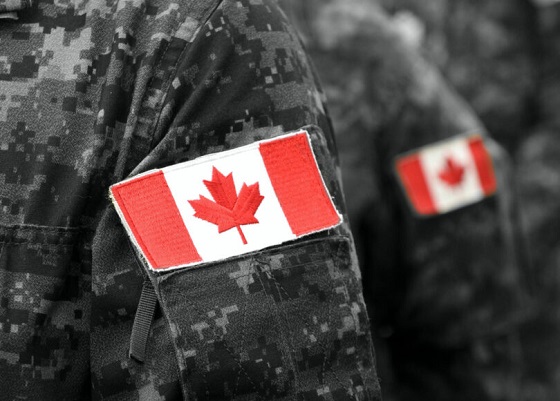
How the 2025 Federal Budget Demands More From Those Who’ve Already Given Everything
I’ve lived the word sacrifice.
Not the political kind that comes in speeches and press releases the real kind. The kind Mark Carney wouldn’t know if it slapped him in the face. The kind that costs sleep, sanity, blood. I’ve watched friends trade comfort for duty, and I’ve watched some of them leave in body bags while the rest of us carried the weight of their absence. So when the Prime Minister stood up this year and told Canadians the new budget would “require sacrifice,” I felt that familiar tightening in the gut the one every veteran knows. You brace for impact. You hope the pain lands in a place that makes sense.
It didn’t.
Kelsi Sheren is a reader-supported publication.
To receive new posts and support my work, consider becoming a free or paid subscriber.
Six months into Mark Carney’s limp imitation of leadership, it’s painfully clear who’s actually paying the bill. The 2025 budget somehow managing to bleed the country dry while still projecting a $78-billion deficit shields the political class, funnels money toward his network of insiders, and then quietly hacks away at the one department that should be sacrosanct: Veterans Affairs Canada.
If there’s one group that’s earned the right to be spared from government-imposed scarcity, it’s the people who carried this country’s flag into danger. Veterans don’t “symbolize” sacrifice they embody it on the daily And when Ottawa tightens the belt on VAC, the consequences aren’t abstract. They’re brutal and direct, causing nothing but more death and destruction. But Mark Carney doesn’t lose sleep over veterans killing themselves.
Punishment disguised as budgeting for a veteran means the difference between keeping a roof or sleeping in a truck. Punishment disguised as budgeting means PTSD left untreated until it turns a human being into another suicide statistic. Punishment disguised as budgeting means a veteran choosing between groceries and medication because some number-shuffler in Ottawa wants to pretend they’re being “responsible.”
This isn’t fiscal restraint it’s political betrayal wrapped in government stationery. Ottawa sells it as hard choices, but the hardness always falls on the backs of the same people: the ones who already paid more than their share, the ones who can’t afford another hit. Carney and his cabinet won’t feel a thing. Not one missed meal. Not one sleepless night. Not one flashback.
But the men and women who already paid in flesh? They’re the ones being told to give more.
That’s not sacrifice.
That’s abandonment dressed up as fiscal policy.
And Canadians need to recognize it for what it is a government that demands loyalty while refusing to give any in return. The fine print in the government’s own documents reveals what the slogans won’t.
Over the next two years, VAC plans to cut $2.227 billion from its “Benefits, Services and Support” programs. [2] Broader “savings initiatives” reach $4.4 billion over four years, much of it through reductions to the medical-cannabis program that thousands of veterans rely on to manage chronic pain and PTSD. [3] Independent analysts estimate yearly losses of roughly $900 million once the cuts are fully implemented. [4]
To put that in perspective: no other department is seeing reductions on this scale. Not Defence, not Infrastructure, not the Prime Minister’s Office thats for damn sure. Only the people who’ve already paid their debt to this country are being asked to give again.
The government’s line is tidy: “We’re not cutting services we’re modernizing. Artificial Intelligence will streamline processing and improve efficiency.”
That sounds fine until you read the departmental notes. The “modernization” translates into fewer human case managers, longer waits, and narrower eligibility. It’s austerity dressed up as innovation. I’ve coached veterans through the system. They don’t need algorithms; they need advocates who understand trauma, identity loss, and the grind of reintegration. They need empathy, not automation.
This isn’t abstract accounting. Behind every dollar is a life on the edge, the human cost and toll is very real.
- Homelessness: Veterans make up a disproportionate number of Canada’s homeless population. Cutting benefits only deepens that crisis.
- Mental Health: Parliament’s ongoing study on veteran suicide shows rising rates of despair linked to delays and denials in VAC services. [5] Knowing MAID for mental illness alone in 2027 will take out a significant amount of us.
- Food Insecurity: A 2024 VAC survey found nearly one in four veterans reported struggling to afford basic groceries. That’s before these cuts.
We talk about “service” like it ends with deployment. It doesn’t. Service continues in how a nation cares for those who carried its battles, and this doesn’t include the cannabis cut to medication or the fight’s we have to fight when they tell us our injuries are “not service related”
The insult is magnified by the timing. These cuts were announced just days before November 11 Remembrance Day, when Canadians bow their heads and say, “We will remember them.”
Apparently, the government remembered to draft the talking points but forgot the meaning behind them, not a single one of the liberal government should have been allowed to show their faces to veteran’s or at a ceremony. They’re nothing but liars, grifters and traitors to this nation. Yes I’m talking about Jill McKnight and Mark Carney.
The budget still runs the second-largest deficit in Canadian history. [6]
Veteran cuts don’t fix that. They barely dent it. What they do is let the government say it’s “finding efficiencies” while avoiding the real structural overspending that created the problem in the first place. When a government chooses to protect its pet projects and insider contracts while pulling support from veterans, that’s not fiscal discipline it’s moral cowardice. The worst part is that This isn’t an isolated move. It fits a six-month pattern: large, attention-grabbing announcements about “reform,” followed by fine print that concentrates power and shifts burden downward. Veterans just happen to be the first visible casualty.
The same budget expands spending in other politically convenient areas green-transition subsidies, digital-governance infrastructure, and administration while the people who once embodied service are told to tighten their belts.
As a combat veteran, I know what it’s like to come home and realize that the fight didn’t end overseas it just changed terrain. We fought for freedom abroad only to watch bureaucratic neglect wage a quieter war here at home. Veterans don’t ask for privilege. They ask for respect, for competence, for follow-through on the promises this country made when it sent them into harm’s way.
Here’s what really needs to change, the liberal government has to go, thats step one. Restore VAC funding immediately. Any “savings” plan that touches benefits, services, or support should be scrapped. End the AI façade. Efficiency can’t replace empathy. Keep human case workers who understand the veteran experience. Audit and transparency. Publish a detailed breakdown of where VAC funds are cut and who approved it. Canadians deserve to see the receipts. National accountability. Every MP who voted for this budget should face veterans in their constituency and explain it, face-to-face.
Budgets are moral documents. They show what a country values. By slashing VAC while running record deficits, this government declared that veterans are expendable line items, not national obligations. The Prime Minister promised “shared sacrifice.” But the only people truly sacrificing are the ones who already gave more than most Canadians ever will.
Sacrifice isn’t about spreadsheets; it’s about service. It’s what every veteran understood when they raised their right hand. This government’s brand of sacrifice asking wounded soldiers to pay for political mismanagement isn’t austerity. It’s abandonment.
Canada owes its veterans more than a wreath once a year. It owes them respect written into every budget, not erased from it.
KELSI SHEREN
Footnotes
[1] The Guardian, “Canada’s 2025 Federal Budget Adds Tens of Billions to Deficit as Carney Spends to Dampen Tariffs Effect,” Nov 5 2025.
[2] True North Wire, “Liberal Budget to Cut $4.23 Billion from Veterans Affairs,” Nov 2025.
[3] StratCann, “Budget 2025 Includes Goal of Saving $4.4 Billion in Medical Cannabis Benefits,” Nov 2025.
[4] Canadian Centre for Policy Alternatives, “Where Will the Federal Government Cut to Pay for Military Spending and Tax Cuts?” Nov 2025.
[5] House of Commons Standing Committee on Veterans Affairs, “Study on Veteran Suicide and Sanctuary Trauma,” ongoing 2025.
[6] CBC News, “Federal Budget 2025 Deficit Second Largest in Canadian History,” Nov 2025.
Kelsi Sheren is a reader-supported publication.
To receive new posts and support my work, consider becoming a free or paid subscriber.
-

 Business1 day ago
Business1 day agoBlacked-Out Democracy: The Stellantis Deal Ottawa Won’t Show Its Own MPs
-
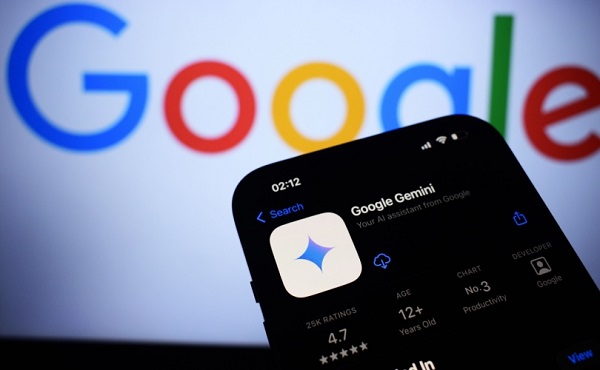
 Artificial Intelligence2 days ago
Artificial Intelligence2 days agoGoogle denies scanning users’ email and attachments with its AI software
-
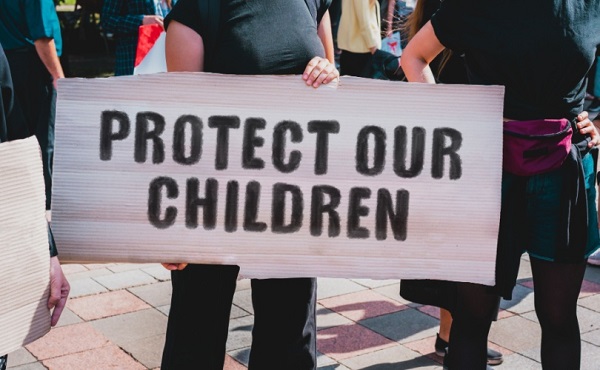
 Alberta1 day ago
Alberta1 day agoPremier Danielle Smith says attacks on Alberta’s pro-family laws ‘show we’ve succeeded in a lot of ways’
-
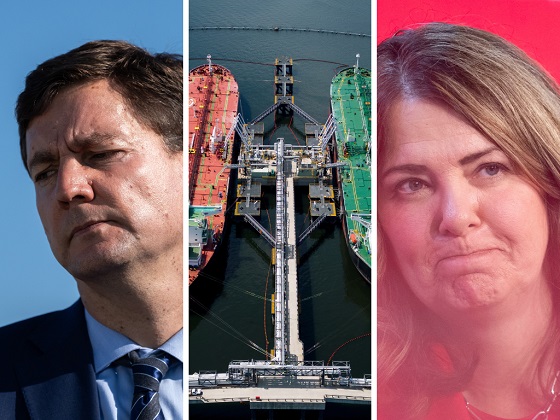
 Alberta1 day ago
Alberta1 day agoNew pipeline from Alberta would benefit all Canadians—despite claims from B.C. premier
-

 Agriculture22 hours ago
Agriculture22 hours agoHealth Canada pauses plan to sell unlabeled cloned meat
-
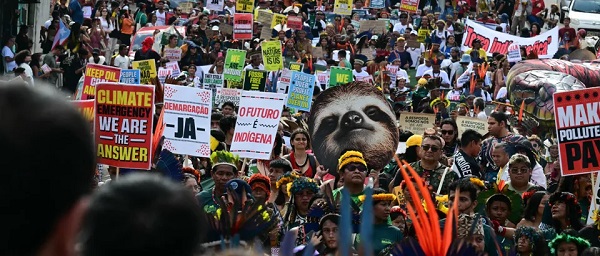
 Daily Caller2 days ago
Daily Caller2 days agoEXCLUSIVE: Here’s An Inside Look At The UN’s Disastrous Climate Conference
-
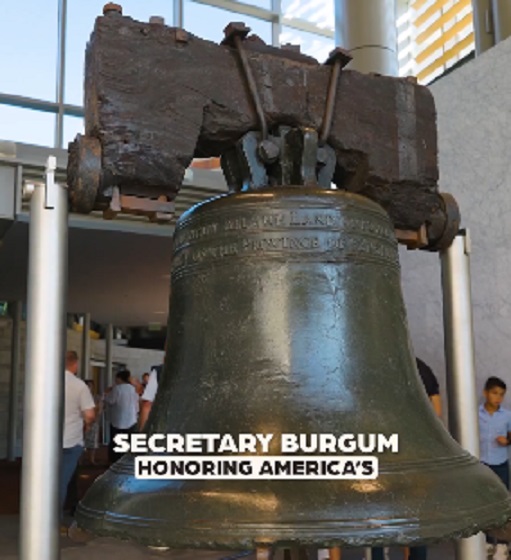
 International22 hours ago
International22 hours agoAmerica first at the national parks: Trump hits Canadians and other foreign visitors with $100 fee
-

 Crime21 hours ago
Crime21 hours agoFBI Seizes $13-Million Mercedes Unicorn From Ryan Wedding’s Narco Network














